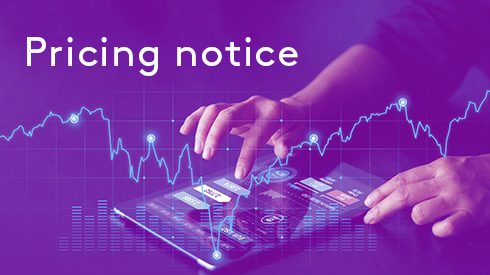The late 2010s saw a big response to the potential of the electric vehicle (EV) market. In 2017, global EV sales hit 1 million units. Expectations of massive growth meant that the market had concerns about producing enough lithium to meet future demand and prices rose.
Subsequent investment in lithium capacity brought new supply into the market but demand, which was starting from a low base, didn’t grow at the same rate.
Supplies of lithium flooded the market. Lots of surplus lithium in market meant that prices started on a downward trend that would last several years.
Now lithium prices are rising once more due to building expectations about future EV sales. Concerns are growing about material shortages and the need to expand lithium production capacity. Is it 2017/18 all over again?
Lithium rising
Between October 1, 2020, and May 1, 2021, key lithium prices rose by between 42% and 128%.
Fastmarkets expects prices will continue to rise in the short term. Participants during our recent webinar Lithium supply fundamentals tend to agree. We asked how lithium prices would change over the next three months: 69% of respondents thought lithium prices would trend higher.
This is because demand is increasing but supply is tight.
Sales of EVs grew in 2020 despite the economic impact of Covid-19. The biggest auto markets all saw year-on-year growth: Europe sales grew by 140% and the China market increased by 8% annually. Even the United States, where EV sales numbers are lower, saw growth of 4%.
On top of demand, while prices were falling, the market was destocking. When EV-related demand grew, producers and investors were responding to a low-price environment. When it came to restocking, there was less material available to draw from. Prices rose as a result.
Movement and momentum
The EV market is in a different place than in 2017/2018. In 2020 global sales of EVs hit 3.24 million, 43% more than in 2019. Despite the economic impact of Covid-19, sales continue to grow.
At the same time the cost of batteries is coming down and the driving range is expanding. This pushes the price of EVs down while performance increases.
EVs are the largest driver of lithium demand and rising EV sales will continue to increase the need for lithium.
Sustainability and the lowering of CO2 emissions are high on government agendas. Government legislation on CO2 emissions is pushing automakers to produce more EVs instead of traditional internal combustion engine vehicles.
Covid-19’s economic impact has also forced governments to announce infrastructure bills in efforts to rebuild economies. These bills will provide funding and investment for projects that promote sustainability and green technology, and reduce CO2 emissions.
There is a greater understanding of the market from the investment community. They are now more informed about projects and how to identify a good prospect. That means new lithium projects are in development. Fastmarkets is tracking at least 25 projects that are due to come online between now and 2024.
Provided these projects stay on schedule, more material will come into the market to help supply keep pace with near-term demand.
But lithium production capacity will need to increase further to meet long-term demand forecasts. This will require even more investment.
Onwards and upwards
The World Bank estimates that five times more lithium will be needed to meet global climate targets.
Battery technology is developing all the time and more EVs are entering the market. Pressure from governments and end users on sustainability is putting momentum behind EVs. This is driving the increasing demand for lithium.
The lithium market is more mature than it was a few years ago. Its growth drivers are more consistent and more understood. The tools to invest and manage risk are more sophisticated.
At the same time, market participants are more informed on the nuances. Rising lithium prices are attracting investor interest. And investors are waiting for their moment.
For more in-depth analysis of the lithium market:
- Watch our webinar Lithium supply fundamentals
- Visit our energy transition insights hub






